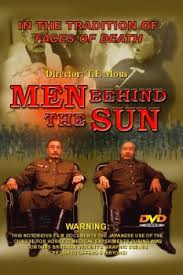unit 731 hoodie

Insane VesperBlood Of The MoonLayiL Tomb MoldCoincidence of OppositesThe Bottomless Perdition Agnostic FrontShoot His LoadCause for Alarm/Victim in Pain PrimogenorumDamned Hearts in the Abyss of MadnessDamned Hearts in the Abyss of Madness SACRILEGEFlight of the NazgulBehind The Realms of Madness (Reissue) CarcassFermenting InnardsReek Of Putrefaction VoivodWe Are ConnectedPost SocietySG of Suffer Yourself)ExtinctPandemonium- Sunless DomainThe Wine Of Satan Napalm DeathBloodless CoupApex Predator- Easy Meat Black CiliceTimeless SpectreBanished From Time MidnightVomit QueensShox Of Violence Death WorshipDesolation SummoningExtermination Mass Album and artist links default to searching Amazon. Unfortunately, Amazon does not carry all the music that we play on SomaFM so some searches may fail to match anything. You may want to try searching on your favorite used CD store in these instances. We attempt to link independent artists sites when we have them.

It is decades since Li Fengqin's father was cut apart by Japanese doctors at a covert base used for human experiments, but she still hopes Tokyo will confront one of World War Two's most barbaric Asian chapters."
mw3 hoodiesThis debt of blood must be paid," Li said, tearfully recalling his fate at Unit 731.The world last week remembered 70 years since Soviet troops liberated Auschwitz, a site that has become a global byword for acts of inhumanity.
hoodie nederlands elftal Visitors look at a scene depicting human experiments at a museum in Harbin, northeast China, dedicated to Unit 731, which was built to conduct research during World War Two into germ warfare, weapons capabilities and hte limits of the human body ©Fred Dufour (AFP)
hoodie nederlands elftal
Eight months later the Red Army was sweeping through northern China where its forces found themselves at the gates of another camp which still conjures visions of unspeakable horror.Unit 731 -- at first described as a lumber mill, then a water purification plant -- was built to conduct research into germ warfare, weapons capabilities and the limits of the human body, rather than for mass extermination.But its remains echo many of the chilling hallmarks of a former Nazi death camp -- a disused railway track, ghostly buildings, and a biting winter chill.One structure contains rows of cages that housed giant rats which Japanese doctors used to produce the bubonic plague unleashed on hundreds of thousands of Chinese.Elsewhere, dozens of gruesome surgical instruments are laid out, including tiny weighing scales for internal organs and clamps to fix hysterical patients into position."Experiments were carried out without anaesthetic so that the results would not be influenced," said Gao Yubao, director of the camp museum, which Chinese authorities plan to expand.

Behind him a video continually retells the story of a young Chinese woman who had her arms frozen stiff with ice, before being placed into a vat of hot water.A reconstruction of the scene shows a Japanese doctor striking at the flesh, stripping it off and reducing her forearms to bones as her screams echo around the hall.- 'Damage and suffering' -Imperial Japan's bloody invasion of China remains a major source of tension between Asia's two biggest economies, and Beijing commonly calls on Tokyo to "confront history".The sprawling Unit 731 complex is in the southern outskirts of Harbin, the biggest city of Manchukuo, the puppet state set up by Japan after it occupied northern China in 1931.At least 3,000 people, mostly Chinese civilians along with some Russians, Mongolians and Koreans, were experimented on and died between 1939 and 1945, Chinese state media say.Japan has repeatedly apologised for its part in the Second World War and acknowledges that it "caused tremendous damage and suffering".

But it has never officially recognised the atrocities took place at Unit 731. The number has no particular significance there and few Japanese made any link when nationalist Prime Minister Shinzo Abe posed in a fighter jet emblazoned with "731".Abe's government denied any deliberate provocation.Many educated Japanese know about Unit 731 and the events that took place there, although awareness among the general population is low.Nonetheless a Tokyo court ruled in 2002 that the former imperial army researched, developed and produced biological weapons and used them in China.Japanese troops dropped plague-carrying fleas on villages while contaminating wells and food with cholera germs, it said.But it turned down Chinese plaintiffs' demands for compensation and a state apology, reasoning that was a government issue.Beijing's foreign ministry spokeswoman Hua Chunying said last week's Holocaust Memorial Day was "a moment for everyone to draw lessons", commending the "attitudes demonstrated by the German leaders" in comments seen as a reference to Japan.But while China is quick to remind Japan of past wrongs, it has been far less willing to recognise the role of the ruling Communist Party in domestic disasters such as Mao Zedong's Great Leap Forward and the ensuing famine that killed several tens of

The Cultural Revolution of 1966-76 and the 1989 Tiananmen Square killings have also never been historically scrutinised within the country.- 'Pieces of wood' -Some of those at Unit 731 died in experiments testing weapons such as grenades and biological bombs. Others are said to have been buried alive or drowned.Doctors injected prisoners with animal blood or forced them to share cells -- or have sexual intercourse with -- diseased inmates to test how infectious the conditions were, historians say.Li discovered her father's fate more than half a century after he went missing in spring 1941, when a list of Unit 731 victims was discovered in archives in 1998.Li Pengge spoke Chinese, Russian, Korean, Japanese and English, and was detained after refusing to help Japanese Intelligence detect Soviet signals, his daughter said.He faced his gruesome death on an operating table aged 25, before she was even born.Now 73, she pointed to a graduation photograph of a tall, slender man."There's no way to describe years of hardship seeking my father and the pain of knowing he'd been killed," she said."